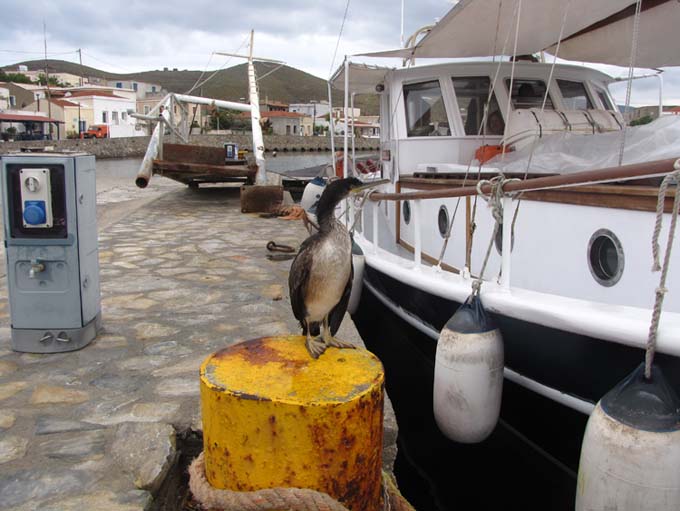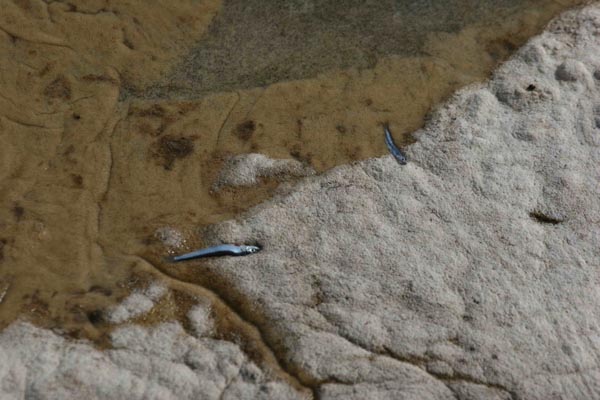This year was not a good one in the Northern Aegean Sea neither for the Mediterranean Shag, nor for the fishermen. An algal bloom, which started at the end of 2009, now, at the end of May, it has still not completed its biological cycle, leaving several marine areas in the region still covered with its remains. Its long duration has had devastating effects particularly on the breeding performance of the Mediterranean Shag in the Northern Aegean, where the species largest colonies in Greece are located. The breeding success was literally decimated, as some colonies produced up to 50 times less juveniles then during previous years. The extent of algal bloom was much greater than initially expected reaching as far as Limnos, Northern Sporades and Skyros in the central Aegean Sea. Similarly, seabird surveys at sea indicate that areas affected by algal bloom are inhospitable to seabirds which avoid them.
Juvenile shag looking for food at the port of Psara (Central Aegean Sea)
Widespread algal bloom at Kavala bay (northern Greece)






